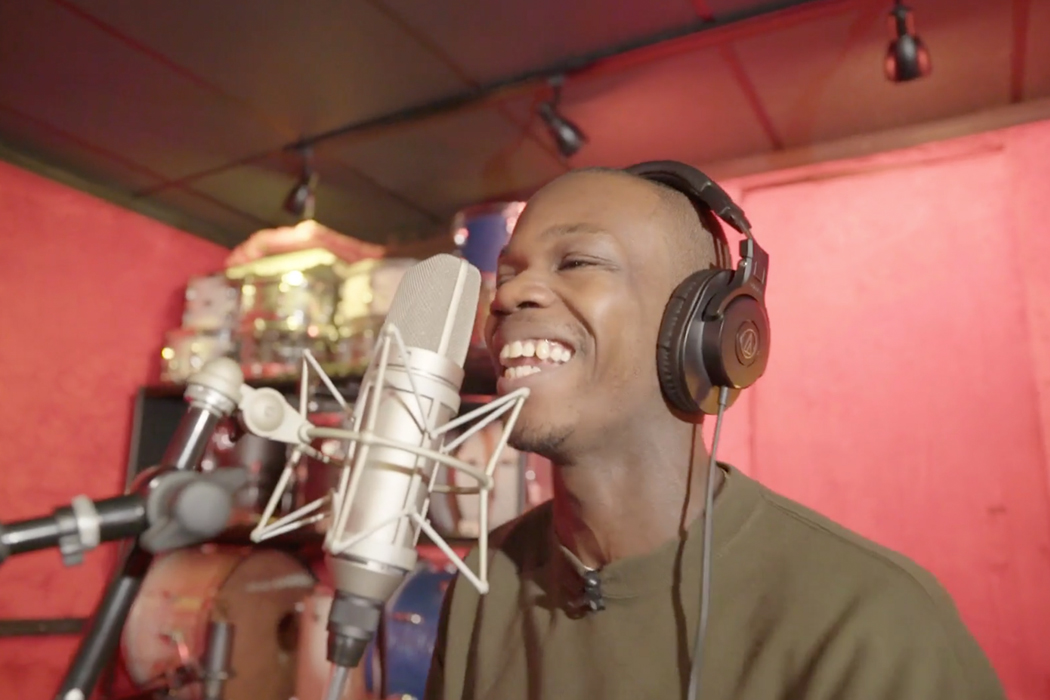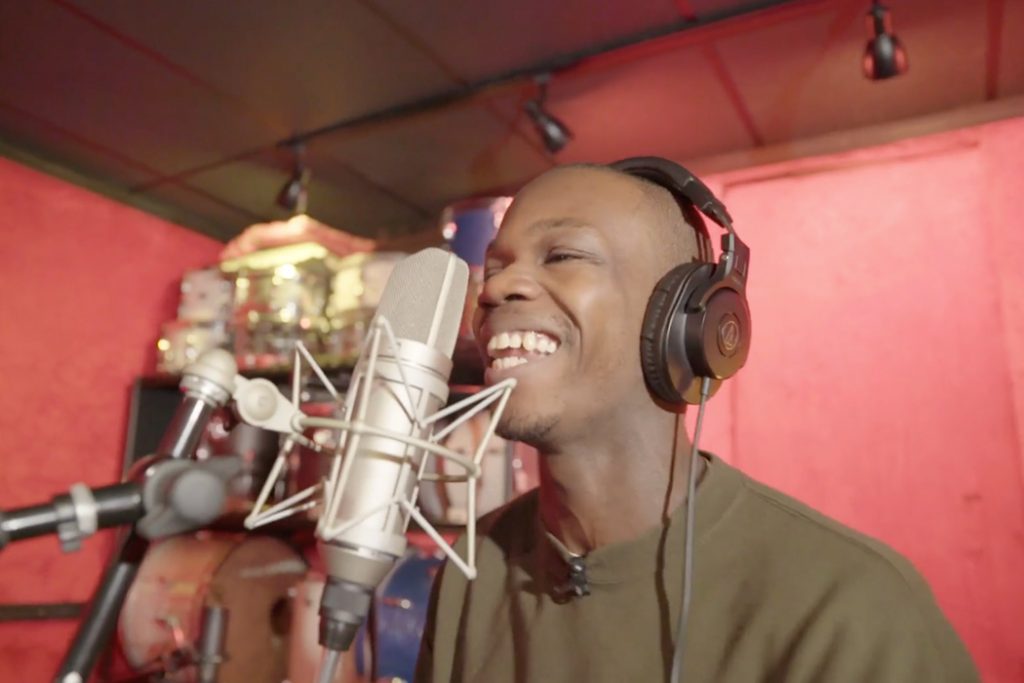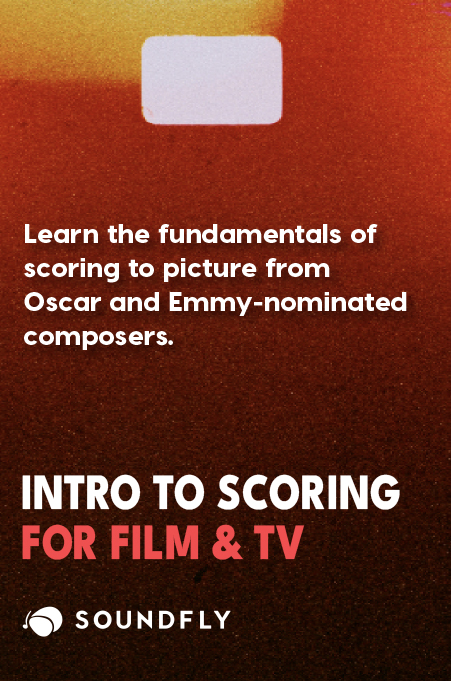
+ Recording and mixing unique, dynamic vox? Grammy-winning pop artist Kimbra explores how to harness the full creative potential of your vocals in her acclaimed online course with Soundfly, Kimbra: Vocal Creativity, Arranging, & Production.
I remember the first time I worked with a vocalist… it was challenging, exciting, nerve-wrecking, confusing, and a lot of other emotions in-between!
It can seem a little scary going into it for the first time, or even after a dozen times because you never really know what you’re going to get out of it. Sometimes it works out great, other times you wish you never even contacted them (I know that’s bleak but I’m just being honest). We want you to have positive experiences working with vocalists because being comfortable working with others in the music industry is extremely important. If you want to network and work with big producers, you should start to refine this skill set!
So, here are seven practices to take into consideration when working with vocalists in any studio situation. And to dive even deeper into strategies for creating crystal clear, ambient, or immersive vocals, definitely check out Soundfly’s course, Modern Pop Vocal Production.
1) Get to Know Your Vocalist
Like most people in this world, musicians perform better when they’re feeling comfortable. If they start to feel that they’re unsure about who they are working with, they’ll probably react in a way that worsens their performance. Nobody wants that!
One great way to keep them confident is to familiarize yourself with your vocalist beforehand! Having a real conversation before you start recording can help you both feel comfortable working with each other. Chances are always better to create magic in the studio if you’re having fun.
2) 5-6dB of Headroom
It is 1000x easier to bring up the volume on post-recorded vocals when they are sounding quiet vs. trying to reverse distortion out of vocals that were recorded in too hot. If your vocalist is “redlining” on your mixer, make sure to turn their incoming signal down.
A great way to bypass this all together is to test out how loud the signal coming in is before you even start recording. This is an easy way to stop potential headaches down the road. The last thing you want is to ask them to record a magical take again, or to come into an additional session because you dropped the ball on your volume settings. This makes you look extremely unprofessional and may even cost you some money.
3) Know What You Want Beforehand
Do not go into the recording session blind on what you want the vocalist to do. Do not say things like “do whatever feels right.” Spend adequate time thinking about how you want your vocalist to sound on your track, and bring references of other songs to use as blueprints to better explain your position.
Know how many verses you want, hooks, if you want a bridge, harmonies, etc. Having a good idea of exactly what you want will show the vocalist that you’re a professional, and that you respect their time.
+ Learn production, composition, songwriting, theory, arranging, mixing, and more — whenever you want and wherever you are. Subscribe for unlimited access!
4) Simple Processing While Recording
If you want to have basic compression or EQ on the vocals while you record, that’s fine. However, if you over do it with reverb, compression, EQ, or any other vocal processing effects and you don’t like the way it turns out, there’s not a lot you can do about that once the dynamics have been changed or are gone.
You can easily add or take any audio effects in the mixing phase, but you can’t reverse your processing once it’s printed.
5) Keep Their Confidence High (Don’t Say “But” or “I Don’t Like This”)
Circling back to my first point… keep your singer’s confidence high! If you’re unhappy about a certain part of the song, don’t say things like “this is terrible” or “I don’t like this part.”
Instead, try saying things like “I love what you did here, can we try a variation of this to replace the bridge we have now?” Or, instead of saying “you don’t sound very good in the outro…,” how about, “there’s a few sharp notes in the outro, would you rather do pitch correction or re-take the vocals instead?” Give your vocalist power and reassurance in their choices: this will help you get along and create magic in the studio.
+ Read more on Flypaper: “Why Singers Need to Learn to “Self-EQ” With Their Vocals.”
6) Provide Lyrics
This is commonly overseen, and it will make your workflow much faster if you already have lyrics, or at least some sketched out. Writing well-thought out lyrics takes time, and this should be prepared beforehand so you don’t sit in the studio with a pen and paper struggling to get some words down. No one likes this.
7) Take Breaks
Like #6, this one is easily forgotten about. You don’t need to grind for hours on end to feel like you’ve done a good job. The vocalist you’re working with is only human, and will need to rest her/his voice to make sure they don’t risk overdoing it. Be okay with 15-20 minute breaks every couple of hours.
Breaks are especially helpful if you’re hitting creativity problems! The time you let your mind think about other things helps you recollect your thoughts and can help you move past creative blocks. Additionally, make sure the vocalist does some proper warm-ups if the session feels like it may take a few hours.
Conclusion
Once you start to really understand how to navigate the dynamics of teaming-up with singers, it can become a lot of fun! It’s so inspiring to watch vocalists work their magic, because like working with any other musicians out there – it’s all happening in real time. You get to witness true talent unfold itself right before your eyes.
If you haven’t worked with a singer yet, we highly recommend it. Get out there and expand your music career by reaching out to vocalists you’d like to collaborate with!
Want more?
Continue learning with hundreds of lessons on songwriting, composing, home recording, electronic production, beat making, and much more. Explore Soundfly’s exciting courses like Modern Pop Vocal Production, Unlocking the Emotional Power of Chords, and Kimbra: Vocal Creativity, Arranging, and Production.
—
Nicholas Voorhees is the CEO and Founder of Melody Nest.





